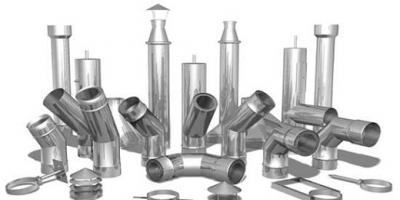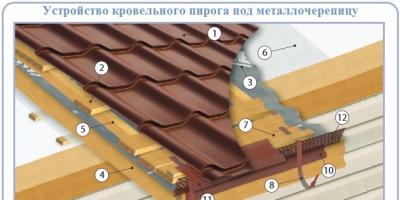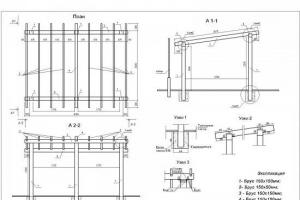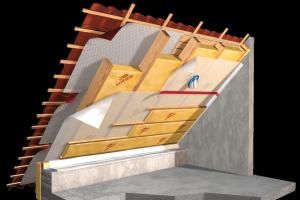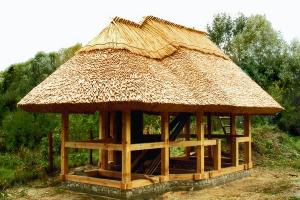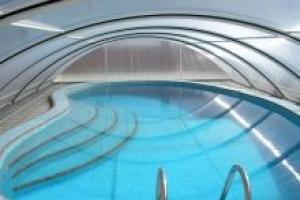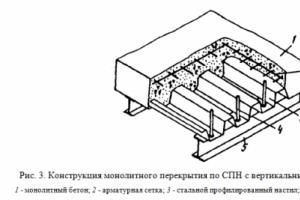After completing the construction of the house and other outbuildings of primary use, it is the turn to equip a recreation area. For relaxation and active leisure, an open or closed gazebo is perfect, which will protect from the scorching sun, creating a pleasant shade. This structure does not have such a unitary function as a garage or shed, therefore special requirements are imposed on the external appearance of the structure. Many homeowners are wondering how to cover the roof of a gazebo so that it looks aesthetically pleasing, but at the same time is inexpensive. In this article we will try to find out what roofing material can be used to construct a reliable roof.
Flexible roofing is a technologically advanced roofing material that can be used to quickly cover the roof of a gazebo. It is made from fiberglass impregnated with modified synthetic rubber or refractory modified bitumen and then covered with a composite coating. The advantage of soft tiles is their highly decorative coating, which has a rich texture and a variety of colors, reminiscent of the shades of traditional clay tiles. The advantages of soft tiles are:
- High degree of protection against moisture. The moisture-proof properties of flexible tiles make this material resistant to difficult weather conditions.
- A light weight. One square meter of flexible roofing weighs no more than 13 kg, which allows you to save on lumber required for the production of the roof rafter frame.
- Ease of installation. Thanks to the self-adhesive layer with which this type of roofing is used, you can cover the gazebo with a soft roof yourself, and you don’t even need an assistant for this.
- Silence. The soft roof has a high sound insulation ability, so during rain, hail or wind it does not increase the noise.
- Durability. The service life of bituminous shingles reaches 50-70 years, provided that the roofing pie is properly organized and the structure is maintained in a timely manner.
Note! Compared to other roofing materials, soft tiles are inexpensive; 1 square meter of this covering, depending on the quality, will cost 500-1600 rubles. However, the cost of the roof also needs to include the cost of continuous OSB sheathing and lining.

Ondulin
Ondulin is a roofing material based on roofing cardboard impregnated with refractory bitumen, which gives it moisture-proof properties. It is made in the form of rectangular sheets measuring 0.95x2.05 meters with a wavy relief reminiscent of slate. This is a practical covering that can be used to cover the roof of a gazebo inexpensively in a matter of hours. It is attached to the sheathing with special roofing screws. This material has the following advantages:
- A light weight. Ondulin weighs much lighter than bitumen shingles. The weight of each sheet of standard size is 6 kg, which allows you to save on the sheathing, foundation and rafter frame of the gazebo.
- Silence. Ondulin sheets do not have a resonating ability, so they do not amplify the sound of falling drops during rain or hail, but dampen them. This is a useful quality for a gazebo roof, since you often have to wait out bad weather in it.
- Durability. The service life of ondulin is 20-25 years, however, even after this time it retains its performance properties and simply fades gradually.
- Weather resistant. Ondulin is highly resistant to atmospheric moisture, temperature changes and mechanical damage.
Important! Ondulin is produced in only 4 standard colors, the price of one sheet costs 400-500 rubles, it is cheaper than flexible roofing. However, if you plan to install a barbecue or stove in the gazebo, it is not recommended to use ondulin for roofing, since it is a flammable material.


Polycarbonate
Polycarbonate is a modern polymer belonging to the category of thermoplastics. It has high light transmittance of 84-92%. To arrange the roof of a gazebo, cellular polycarbonate is most often used, the structure of which consists of cavities formed by internal stiffeners and filled with air. This material has the following advantages:
- Flexibility. easy to bend without heat treatment or the use of special equipment along the direction of the honeycomb. Therefore, arched structures, popular in gazebo designs, can be easily made from this roofing covering.
- Ease of processing. Cutting and drilling polycarbonate is very simple; a conventional drill and hacksaw are used for this.
- A light weight. Polycarbonate is much lighter than bitumen shingles; in addition, this material is laid on a sparse sheathing with a large step between the bars, which is much cheaper than a solid one.
- Variety of colors. The material is available in a huge range of colors; polycarbonate can be transparent, translucent or matte, depending on needs.
The cost of a 3.5 mm thick polycarbonate sheet measuring 2x6 m, which is used for roofing, costs 1200-1300 rubles. Therefore, when deciding how to cover the roof of a gazebo, you need to pay special attention to polycarbonate as a practical and durable roofing material.


Video instruction
When choosing a roof for a gazebo, pay attention to the durability of the material, price and aesthetic appeal. Then, after construction is completed, the gazebo will become your favorite place to relax in the country!
Review of roofing materials for gazebos
There are many roofing materials on sale, differing in technical characteristics and price. In the article we will look at different options and decide how to cover the roof of a gazebo cheaper and better.
Onduvilla

Price per m2: from 400 rubles
Dimensions:
- Width - 107 cm
- Length - 40 cm
- Thickness - 3 mm
Advantages of the material:
- Reliable waterproofing - roofing sheets are fastened with nails to the top of the wave. At high temperatures, the puncture sites are filled with bitumen.
- Ease of installation - Onduvilla sheets are equipped with hydraulic locks. With their help, the correct overlap is easily formed.
- Beautiful design - Onduvilla voluminous bitumen shingles look like natural tiles. This is a unique material that looks bright and contrasting.
- Resistance to sunlight - sheets are painted in four layers. Therefore, the material is reliably protected from burnout.
- Environmentally friendly - the roof is made from safe components. These include cellulose and bitumen.
Disadvantages of the material: there is an opinion that Onduvilla is not strong enough, because the material is cut with a construction knife. This is a misconception, since the roof can withstand heavy loads.
If you want to cover the roof of your gazebo stylishly and inexpensively, take Onduvilla.
Profiled sheet

Price per m2: from 320 rubles
Dimensions:
- Sheet thickness - 0.5-0.8 mm
Profiled sheets are produced in different sizes. They are galvanized and polymer coated.
Advantages of the material:
- Easy installation
- Fire resistance
- Light sheet weight
Disadvantages of the material:
- Drum effect - when it rains outside, drops drum on the corrugated sheet. Therefore, in bad weather it will be uncomfortable in the gazebo
- Loss of resistance to corrosion - when the protective layer is damaged, profiled sheets begin to rust.
Corrugated sheeting can be used as a roofing material, but it is not advisable. This material cannot be called the best.
Wave slate

Price per m2: from 100 rubles
Dimensions:
- 175×113 cm
- Sheet thickness - 5.2 mm
Advantages of the material:
- Non-flammability
- Quiet in the rain
- Slight heating in hot weather
- Low price
Disadvantages of the material:
- Danger to the environment and humans - slate contains asbestos.
- Fragility - you need to be careful when installing, as the sheet may crack.
- Deterioration in appearance - the slate is gradually covered with moss. Therefore, the gazebo looks ugly.
- Heavy weight - the weight of one sheet is 21.6 kg.
If you are building a gazebo in your country house, think about whether you need such material. Slate is cheap, but the performance characteristics of the material are low.
Metal tiles

Price per m2: from 370 rubles
Dimensions: 500×118 cm
Advantages of the material:
- Wide choice of colors
- Easy installation
- Acceptable price
Disadvantages of the material:
- Low sound insulation - it is uncomfortable to be in the gazebo when it rains.
- Tendency to corrosion - rust appears in places where the protective layer is damaged.
Metal tiles are suitable for the roof of a gazebo, but this material has significant disadvantages.
Roofing roofing felt

Price per m2: 50 rubles
Roll sizes: 1×10 m
Advantages of the material:
- Low price
- Easy installation
Disadvantages of the material:
- Short service life - roofing felt is not durable.
- Flammability - the material is highly flammable at high temperatures.
Roofing material has few advantages. Therefore, this material is not suitable for arranging the roof of a gazebo in the country.
Polycarbonate

Price per m2: from 200 rubles
Dimensions:
- Polycarbonate is manufactured in different sizes.
- Sheet thickness - 4 mm
Advantages of the material:
- Light weight
- Ease of installation
- Good light transmission
Flaws:
Cheap roofing materials are destroyed when exposed to sunlight. Polycarbonate is quite beautiful, but for a gazebo it is better to choose an inexpensive and high-quality material that is not afraid of ultraviolet rays.

Price per m2: from 350 rubles
Dimensions:
- 100×31.8 cm
- Thickness - 3 mm
Advantages of the material:
- Variety of forms
- Light weight
- Silence in the rain
- Long service life
Flaws:
- Difficulty of installation - before laying soft tiles, you need to build a solid base. This is an additional cash cost.
- Low resistance to strong winds - repair and replacement of individual elements is required.

Price per m2: from 1000 rubles
Dimensions: 31×47.7 cm
Advantages of the material:
- Fire resistance
- Excellent aesthetic properties
- Fire safety
- Inertness to chemical influences
Disadvantages of the material:
- High price - if you need a budget option, ceramic tiles will not suit you.
- Large weight - the mass of one element is more than 3 kg.
- Fragility - roofing material requires careful handling.
Ceramic tiles are not very suitable for the roof of a gazebo. Such material cannot be called cheap and light.
Video instruction: choosing a roof for a gazebo in the country

Watch a video that discusses different roofing materials.
When building gazebos, preference is often given to the hexagonal shape - it looks very beautiful, and despite the external compactness of the structure, the inside is quite spacious. What is most difficult about this building is its rafter system, the design of which requires special attention during assembly.
We will try to tell you in as much detail as possible about how to make a hexagonal roof on a gazebo. By watching the video in this article, you can visually familiarize yourself with this process.
The structure of any roof consists of a frame, decking (sheathing), and roof. The frame in this case is called the rafter system, and it consists of several load-bearing elements.
Their set depends on the roof design and its size. In order to correctly install rafters with your own hands, you need, at a minimum, to know what elements you will have to use and what lumber you will need for this.
In this regard, the roof of a hexagonal gazebo differs from the roof of a house only in dimensions. All elements used are similar, except that the cross-section of the timber is taken smaller.
The basis of the roof are mauerlat beams. These are horizontal elements that encircle the entire perimeter of the building. The role of the Mauerlat is most often played by the upper trim of the racks.
Structure of the rafter system
The main elements with the help of which the spatial structure of the roof is created are the rafter legs. Although all the parts in the frame are load-bearing, the main loads fall on the rafters.
The cross-section of the timber used to create the rafter system must be such that it can easily withstand wind, snow and weight loads. For a gazebo, this is usually a beam measuring 100*50 mm, or 100*70 mm.

So:
- The third most important element in the roof frame is the purlin, and there are two types. The ridge purlin runs along the roof ridge, and the upper ends of the rafters are attached to it. There are also side purlins that fix the rafters in a certain position, connecting them in the middle.
- The question immediately arises: “Are they mounted in a polygonal gazebo?” And this already depends on its shape. If this is a regular hexagon, then the rafters at the top are connected at one point and in this case the ridge is not needed at all. But in order to firmly fix them in this position, side purlins are installed, and this is clearly visible in the photo below.

- But it can also have an elongated shape, that is: two long and four short walls. In this case, the roof structure will have both side purlins and a ridge. There is also a part in this design called a “tightening”. These are a kind of spacers that diagonally connect the opposite ends of the Mauerlat beams, thereby increasing the rigidity of the frame.
- At the point of intersection of the tie beams, a stand is mounted, which determines the angle of inclination of the roof slopes. This part is located in the center of this structure, and instead of the ridge, the upper ends of the rafter legs rest on it. But it must be said that this is not the only way to create a frame.

- If the gazebo is wooden and has small dimensions, you can do without ties and a stand. But for this you need to make a supporting hexagonal column - it is clearly visible in the picture above. In this case, appropriate selections were made at the ends of the rafters, with the help of which the beams are held on a wooden prism and beautifully connected at one point.
The roof of a small gazebo is usually assembled on the ground, on several convenient supports, or directly on a podium that will serve as the floor. After the vertical posts and trim are installed, the roof frame is installed in its rightful place.
Before covering the roof on the hexagonal gazebo, they begin to fill the sheathing. The instructions will tell you more about this in the next part of the article.
External part of the roof
The roof sheathing serves as the basis for laying the roofing material. The degree of its rigidity affects the structure of the sheathing.
If, as in the example below, it is corrugated board or other sheet material, the flooring elements are mounted at some distance from each other. For rolled materials, asbestos-cement and flexible bitumen tiles, a continuous sheathing is more suitable.

- The main thing here is that all elements are properly secured. And yet, when filling the sheathing, it is necessary to take into account that the end joints of the flooring slats must fall exactly on the rafters and at the same time be located with some offset. For continuous flooring, they usually use a board measuring 100 * 25 mm; if it is step lathing, then take 50 * 25 mm bars. The lumber must be softwood, dry, without knots or curvature.
- The sheathing belts are packed parallel to the ridge girder, that is, in a horizontal position. In the case of using a soft roof, the sheathing is even filled in two layers: first, the working flooring in increments of 35-45 cm, and then a continuous layer of wide slats. They are fastened closer to the edge with nails, recessing the cap well into the thickness of the wood. The length of the nail should be equal to twice the thickness of the sheathing element.

It would be useful to remind you that the sheathing should be covered with roofing material in dry weather. After drying, the wood decreases in volume, and this can compromise the integrity of the top coating.
When a closed gazebo is built (see), intended for year-round use, the roof can be insulated and lined from the inside with clapboard or perforated soffit.
How to cover a gazebo
Not every roofing material is suitable for a gazebo. Theoretically, it is possible, of course, to install anything, but it is quite difficult to imagine an elegant building covered with slate or tin.
Despite the fact that their price is the lowest, due to their unattractive aesthetics they are not suitable for a gazebo.
- Of the sheet materials for this purpose, mainly corrugated sheeting (see) and metal tiles are used. In principle, these materials are similar: both are made of thin sheet steel, only the profile and decorative coating are slightly different. Since the sheets are quite large, work begins with cutting them. In this case, they are guided by the distance from the ridge of the roof to the edge of the lower element of the sheathing.

- The multifaceted roof is covered only with solid sheets, without the use of scraps. Their laying begins from the middle of the slope plane, making sure that the profile grooves of the sheets coincide. The coating is leveled along the bottom edge. Each roofing material manufacturer provides its own fastening system. For metal tiles, these are self-tapping screws complete with shock-absorbing washers. Finally, the external joints of the roof are closed with special corner elements.
- Ondulin is often used for roofing gazebos. This is a corrugated sheet material made from compressed cellulose fibers and bitumen and impregnated with a polymer resin. Thin but quite durable sheets, measuring 2.0 * 0.95 m, with a wavy profile, have an excellent appearance.

- People call ondulin “Euroslate”. The weight of such a sheet is several times less than traditional slate, so for such a light construction as a gazebo, this material is simply ideal.
- Ondulin can be lifted up and mounted without outside help, and it places virtually no load on the roof frame. The technology for laying it is practically no different from installing slate. It is attached to the sheathing with roofing nails with a rubber seal.
You can also cover the roof of the gazebo with tiles: wooden, composite or bitumen. Small-format materials are very convenient to work with, especially when the roof area is so small.
A gazebo is an architectural structure that is most often used in the summer. At the same time, this building should not be considered insignificant, because it significantly improves the landscape adjacent to the house, and also serves as a place of rest. The roof of the gazebo is not only protection from rain. The durability of the entire structure largely depends on the roof, and therefore you should carefully approach the issue of choosing a roof. Let's figure out what is the best way to cover the roof of the gazebo so that this does not affect the reduction in the service life of the structure.
- Massive roofing materials may be too heavy for a structure with a lightweight foundation. If the foundation was laid thoroughly by the owner of the gazebo, and even with a blind area, then you can safely choose any material, not paying attention to its weight.
- It is necessary to determine the optimal roof slope angle. The thing is that throughout the year the roof slope is affected by snow and wind loads. If for snow it is desirable that the roof of the slope be steeper, then for wind it is the opposite. Gusts of wind can significantly damage a roof with a steep slope, and here it is preferable to choose a roof of a horizontal design.
- The location of the gazebo near a reservoir is a signal that waterproof materials should be used in its construction. In addition, it is necessary to saturate the entire surface with antiseptics and anti-corrosion compounds.
- If you plan to make a fire inside the gazebo, this will also affect the choice of material. It is prohibited to use flammable materials.

Polycarbonate
He is considered one of the summer resident's best friends. Indeed, a polycarbonate roof is ideal for structures used in the summer. It has enough positive characteristics and practically no serious disadvantages.

The light weight of the material allows it to be used even in small gazebos. To construct a roof from it, complex geometric calculations are not required, since the material bends. Its moderate plasticity allows you to create unusual shapes. Polycarbonate sheets are easy to cut. Polycarbonate can be attached to almost any substrate. With all this, the material is also quite economical. They can cover the roof of a gazebo cheaply and quickly.
If necessary, polycarbonate sheets can always be removed and then installed back. This allows you to replace part of the roof if it is created from several pieces. Polycarbonate has a cellular structure, and this in turn increases its thermal insulation properties, which are practically absent in other transparent materials. By the way, many polycarbonate sheets contain a special layer for ultraviolet protection, while allowing enough sunlight to pass through. Structures covered with polycarbonate are usually dismantled for the winter, although this material is resistant to frost and temperature changes.
Metal roofing

To create such a roof, sheets of corrugated sheets or metal tiles are usually used. This roofing looks very neat. The weight of such materials is very small, and they are inexpensive. Reinforcement of the frame is also not required. On sale you can find a wide range of colors and sizes of sheets and corrugated sheets, which allows you to create original compositions.

Metal roofing has one drawback, which for some is significant. This type of roof is very noisy. Even when the wind increases, the sheets can create vibration, and when it rains, the sound becomes very loud. This problem can be solved if you use special gaskets during installation that absorb vibration and thereby reduce the noise level.
Bituminous materials

Such materials are also called soft tiles. Some of them are created on the basis of metal and bitumen, and therefore combine their positive characteristics. On the outside there is a layer of basalt coating, which serves as additional protection. This material can be used for almost any type of roof, regardless of the sharpness of the slope angle. The material is sound and heat insulating and completely sealed. This is one of the best modern materials, and therefore, when choosing how to cover the roof of a gazebo, be sure to take a closer look at bitumen shingles. The disadvantages of this material include its cost, since it is slightly higher than the cost of standard corrugated sheeting or polycarbonate.

This material can be considered outdated, but some owners of houses and gazebos, especially abroad, still prefer it. The advantages of tiles include their environmental friendliness and long service life, up to 100 years. Ceramic tiles practically do not change their properties when exposed to sun, snow, low or high temperatures. It is easy to cover even the most complex structures, since the tiles can be divided or cut if necessary. In addition, it has high sound insulation.
Disadvantages include heavy weight. It cannot withstand mechanical loads either.
Unfortunately, now there are not many craftsmen who install natural tiles, and therefore the cost of the work is quite high.

